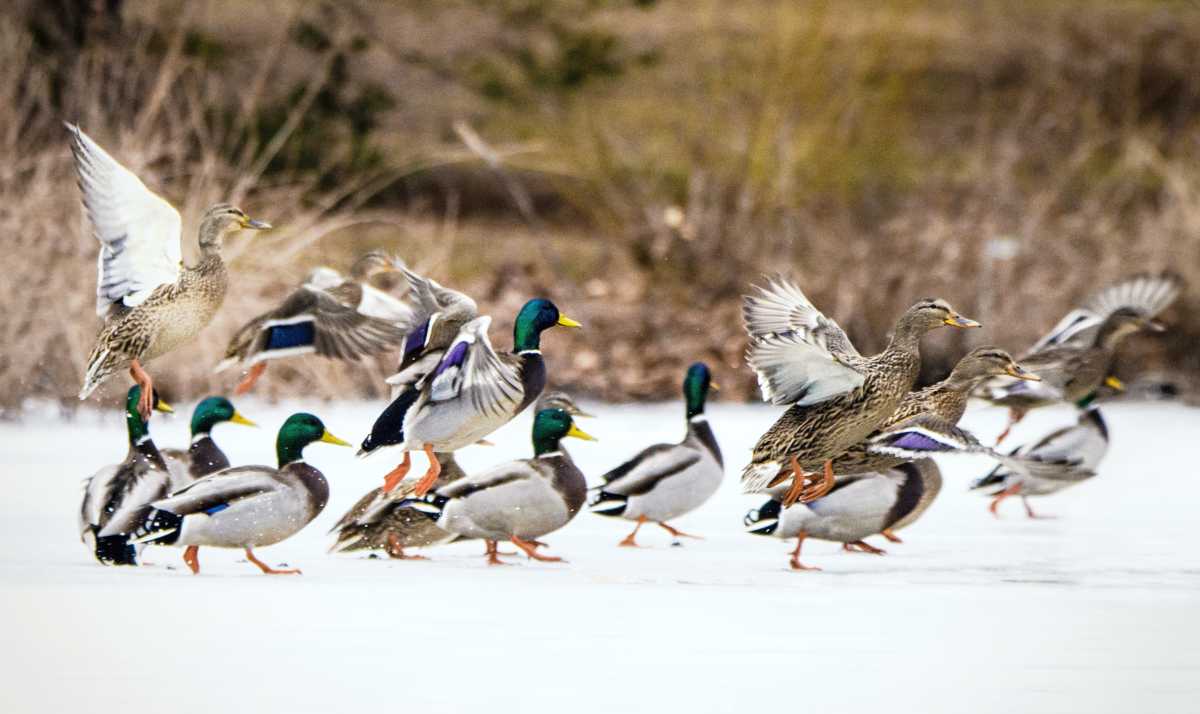Many of us look forward to winter. Whether skiing and sledding, walking quiet beaches, staying inside to catch up on reading, or simply enjoying family and friends during the holidays, there’s a lot to like.
For me, it’s the waterfowl, or more precisely, ducks, swans, and geese! And the more the merrier! Each winter, I look forward to the arrival of the nearly three dozen waterfowl species that fly here to overwinter on the Island’s ponds, lakes, bays, and ocean waters, making our island one of North America’s premier waterfowl viewing locations. Most are avian eye candy with rich tapestries of color and texture. Even the seemingly drabber species, like Gadwall, have a beautiful herringbone pattern when viewed up close.
Waterfowl can roughly be divided into two broad categories: freshwater and marine. While this is not a hard-and-fast rule – since some species will move between both – it is a useful rule of thumb. At the very least, it will give you an idea of where the birds are most likely to be found. A second distinction divides the birds into two sub-categories: dabblers and divers. Dabblers feed on surface or shallow vegetation, such as duckweed, by dipping their bills or tipping their whole heads into the water. Divers, on the other hand, submerge entirely underwater to feed on vegetation, search for shellfish or pursue fish.
However, whether they’re dabbling or diving, all waterfowl spend a lot of time floating or paddling on the surface of the water. Unlike songbirds that constantly flit around in tree tops, this gives the viewer ample opportunity to enjoy their beauty and figure out their species with the help of a decent Field Guide. Of course, identification challenges always exist, like distinguishing between Lesser and Greater Scaup!
In many cases, their names alone will help with the identification. The Northern Shoveler, for example, is a freshwater dabbler that boasts a large and unique shovel-like bill. The Northern Pintail is another dabbler with a helpful name – the male boasts a long, elegant tail to accompany its striking white neck and chestnut head. Of the freshwater divers, the Hooded Merganser is one of the easiest to find. The male has a striking, large, rounded black-and-white head with a bright white chest. The females are just as beautiful, with a large rusty crest atop their heads. Another interesting fact about Hooded Mergansers is that they nest in trees! They’re one of the few duck species that uses large tree cavities for nesting. Another is the Wood Duck, a beautiful (talk about eye candy!) freshwater dabbler found on forested Long Island ponds.
On the saltwater side, the only dabbler you’re likely to see is the Brant, a member of the goose family. It resembles the Canada Goose, but is slightly smaller and has an almost completely black neck and face. The saltwater divers, on the other hand, are a larger and more diverse group. One of the most striking members is the Red-breasted Merganser, whose spiky head feathers have earned it the nickname the “Punk Rock Duck.” Among this category are also the several species collectively known as the sea ducks, very hardy birds often seen bobbing in the ocean waves. These birds, including the several varieties of Eiders and Scoters, are often seen in the ocean near shore, where they gather in rafts that sometimes number in the tens of thousands!
Thankfully, most of these birds can all be found across Long Island. On a recent trip, I was in search of a King Eider, a stunningly beautiful sea duck that overwinters in small numbers in our coastal waters. I wasn’t disappointed. Focusing my scope on the rafts of sea ducks, I was quickly rewarded by a wonderful collection of feathered beauty – the coveted King Eider was present, as well as Common Goldeneye, Red-breasted Merganser, and several species of Scoters (Black,White-winged and Surf), Common Loons, and my favorite – the exotic-looking Long-tailed Duck. The weather was near freezing, and I marveled at the ability of the birds to thrive in such conditions without a problem.
Not so for me, as my fingers and feet were growing uncomfortably cold after a few hours. But as I ambled back to the warmth of a car, with binoculars slung around my neck and scope on my shoulder, forefront in my mind were the beautiful images of these wonderful waterfowl, an annual gift of the winter season I never tire of receiving.



























